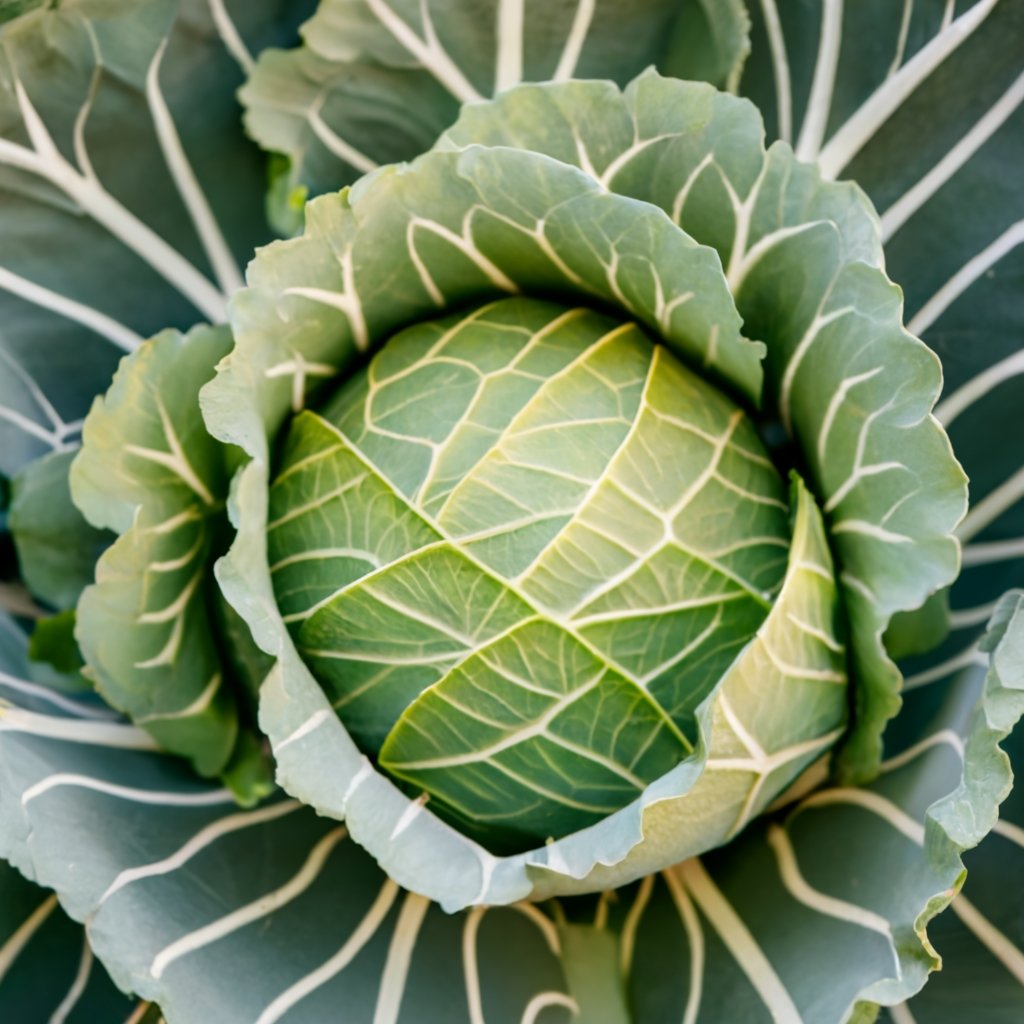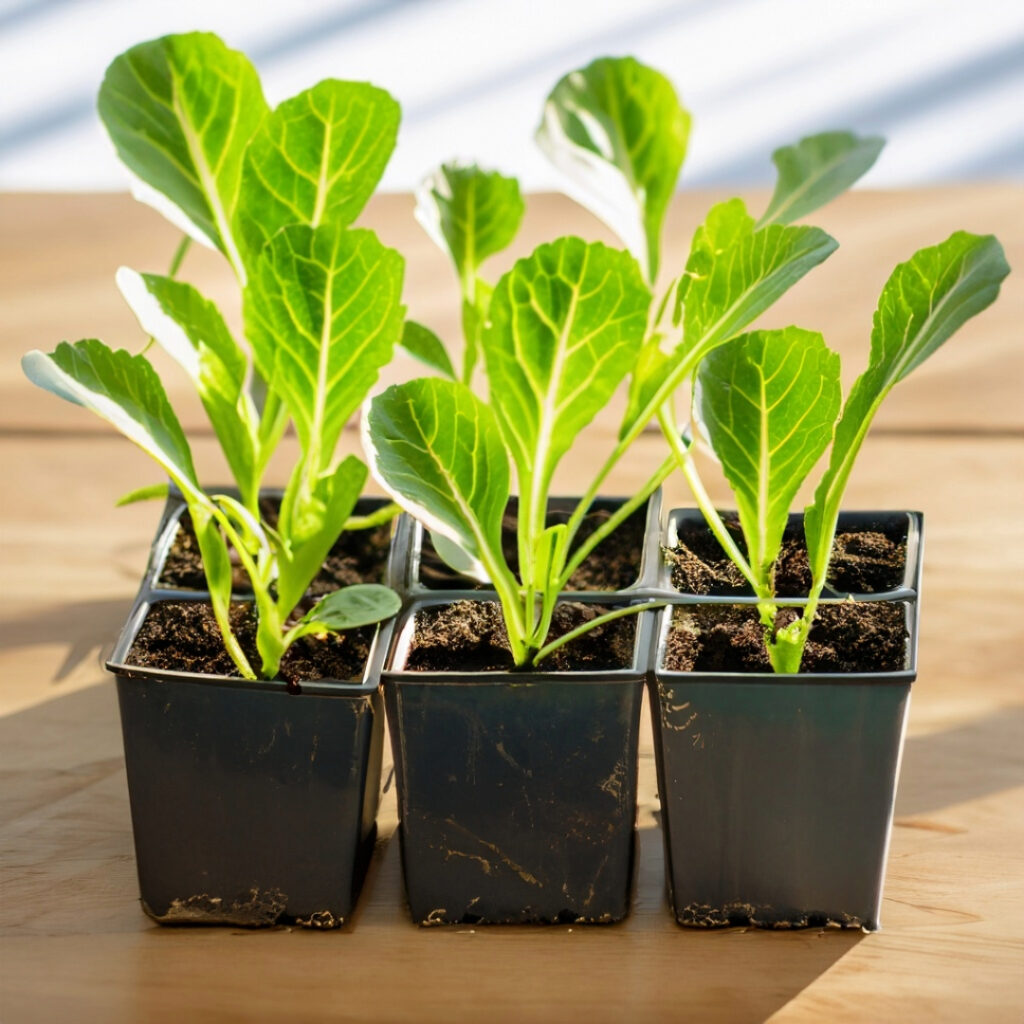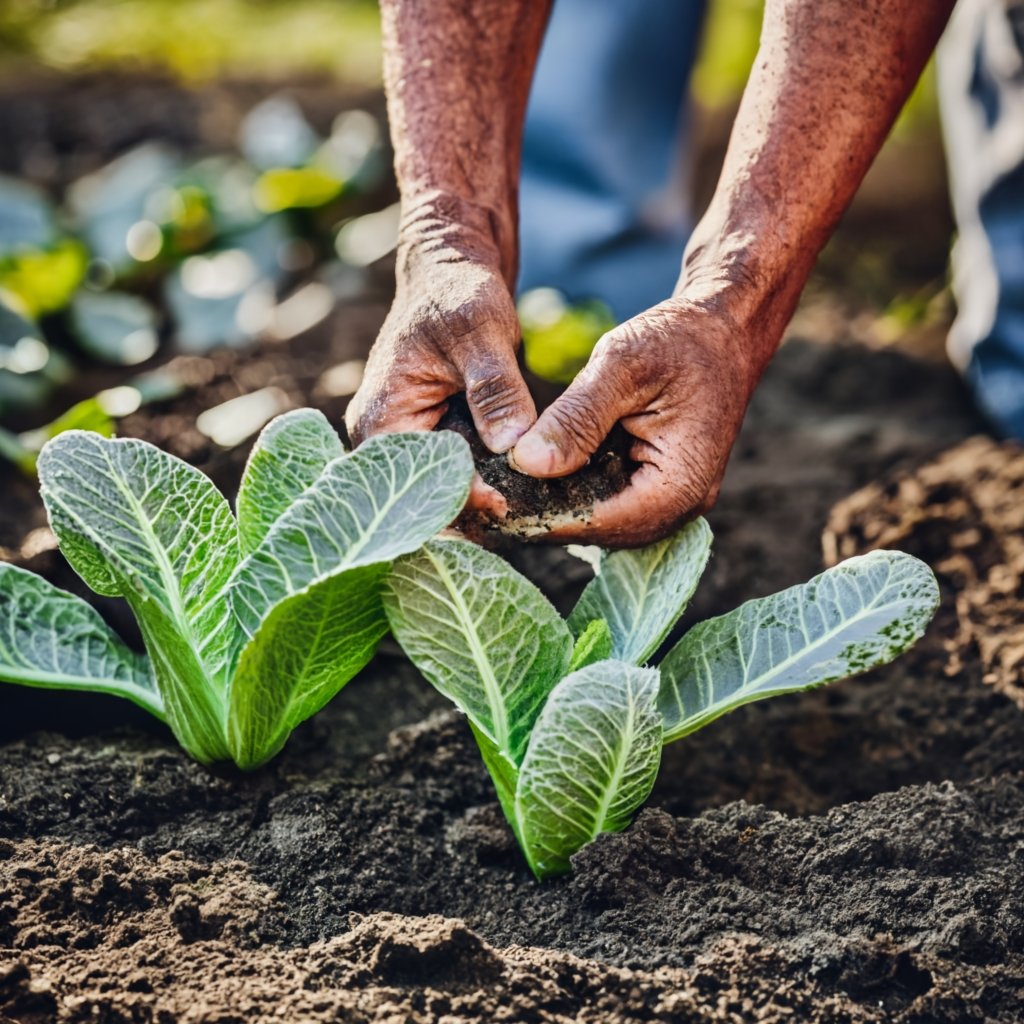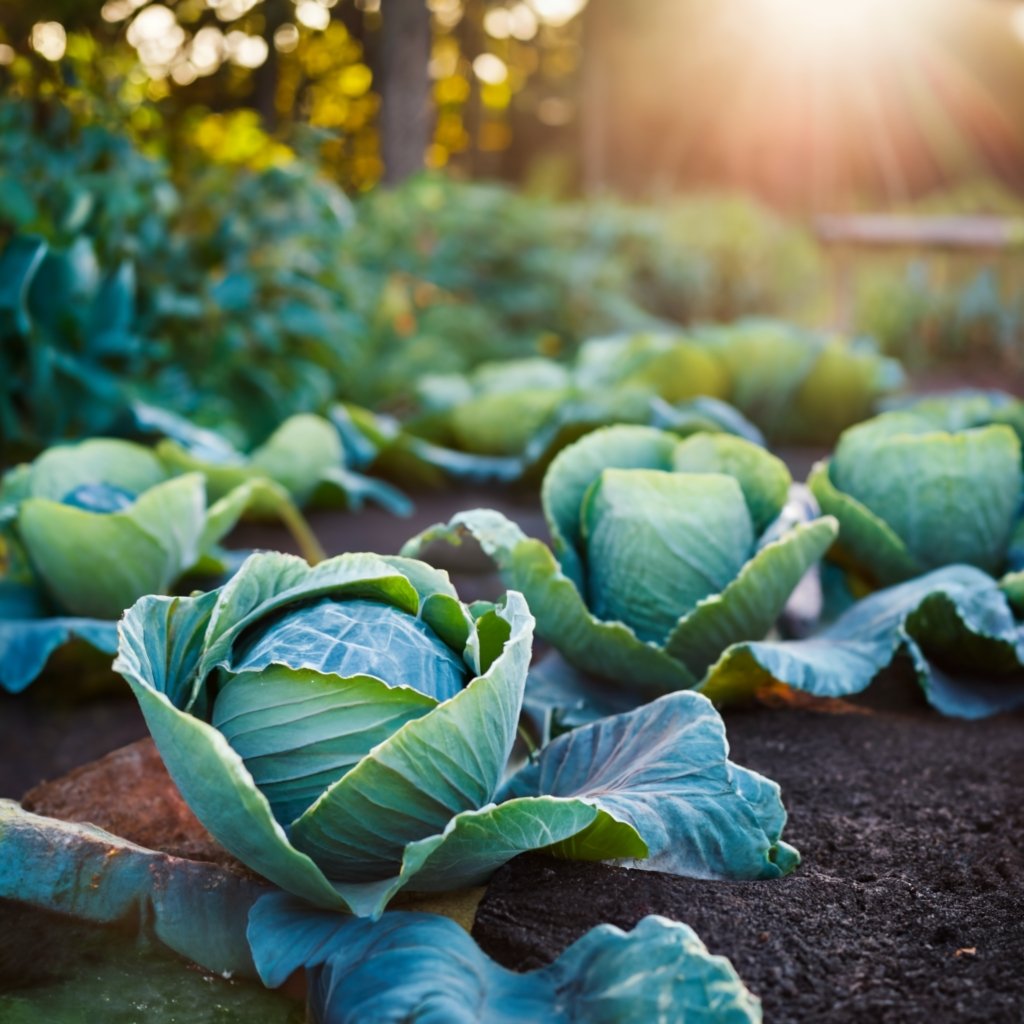In this article, we’ll delve into the various aspects that influence the timing of cabbage head formation. Whether you grow cabbage in your garden or on a larger scale, this guide will offer valuable insights to help you succeed.
The timing of cabbage head formation is influenced by various factors such as soil quality, temperature, and water availability. Generally, cabbages take 50 to 85 days to form heads after transplanting. It’s crucial to maintain optimal conditions, including well-drained soil with a pH of 6.5-7.5, consistent watering, and temperature between 57-77°F. Monitoring for pests and choosing the right cabbage variety can also impact the timing. Harvest when the heads are firm and well-formed.
- The Lifecycle of a Cabbage Head
- How to Plant Cabbage
- Growing Conditions for Optimal Cabbage Head Formation
- Factors Directly Affecting the Time It Takes to Form a Cabbage Head
- Why Some Cabbage Plants May Not Form Heads
- Varietal Differences in Cabbage Head Formation Time
- Pest Impact on Cabbage Head Formation
- Harvest Timing Based on Cabbage Head Formation
- The Role of True Leaves in Timely Cabbage Head Formation
- Conclusion

Understanding how cabbage grow and the timing of each stage is important for multiple reasons:
- Harvest Planning: Knowing when the cabbage head will form helps you plan your harvest schedule.
- Resource Allocation: It aids in efficiently allocating resources like water and fertilizers.
- Pest Management: Timely formation can help you better manage pests that target the cabbage head.
🌱 Cabbage Clues: The time it takes for a cabbage head to form can vary based on several factors, including the variety of cabbage and growing conditions. 🌱
The Lifecycle of a Cabbage Head
Understanding the lifecycle of a cabbage head is essential for anyone looking to grow this leafy green successfully. Let’s break down the key stages that a cabbage plant goes through, with a special focus on the formation of the cabbage head.
Germination and Early Growth
- Seed Sowing: Plant your cabbage seeds in well-drained soil.
- Emergence of Seedlings: Within 5-7 days, you’ll notice tiny seedlings emerging.
🌱 Cabbage Clues: The initial focus is on root and leaf development, not yet on the cabbage head. 🌱
Vegetative Phase
- True Leaves: After the seedlings have grown a bit, true leaves will appear.
- Growth Spurt: The plant will rapidly grow more leaves and stems.

Pre-Heading Stage
- Leaf Curl: The leaves start to curl inward, signaling the beginning of the head formation process.
- Stem Shortening: The stem will become shorter and sturdier to support the forming head.
🌱 Cabbage Clues: This is the stage where you should start paying close attention to your cabbage plant. 🌱
Cabbage Head Formation
- Initial Formation: Small, tight leaves begin to form at the center.
- Maturation: The leaves continue to wrap around each other, gradually forming a solid cabbage head.
Harvest
- Head Firmness: The cabbage head will become firm to the touch.
- Harvest Time: Once the head reaches your desired size, it’s time to harvest.
By understanding these stages, you can better anticipate when your cabbage head will form and take appropriate actions to ensure a healthy, timely harvest.
How to Plant Cabbage
Planting cabbage, a member of the Brassica family, requires careful planning and execution. From starting seeds to transplanting young plants, each step is crucial for a successful harvest.
Starting Seeds
Start Seeds Indoors
To get a head start on the growing season, start seeds indoors 6 to 8 weeks before the last expected frost. Use a seed tray and fill it with soil with a pH level of 6.5 to 7.5.
🌱 Cabbage Clues: Starting seeds indoors helps you monitor the young plants for cabbage pests and ensures a healthier transplant. 🌱
Weeks Before the Last Frost
As you approach 2-3 weeks before the last frost, begin hardening off your young plants by exposing them to outdoor conditions gradually.
Transplanting
Preparing the Soil
Before transplanting, prepare the garden soil by enriching it with compost and ensuring it has a pH level suitable for Brassicas.

The Transplant Process
Gently remove the young plants from their seed trays, being careful not to damage the outer leaves. Transplant them into the garden, spacing them at least 18 inches apart.
Types of Cabbage
While Savoy cabbage is popular for its crinkled cabbage leaves, other varieties may have different growing requirements. Always check the specific needs of your chosen variety.
Harvesting
Ready to Harvest
Your cabbage is ready to harvest when the heads are firm and the outer leaves are vibrant. Cut the heads off at the base, leaving a few outer leaves intact.
🌱 Cabbage Clues: If you notice your cabbage plants starting to go to seed, it’s a sign they’ve been stressed and are not ideal for harvest. 🌱
Growing Conditions for Optimal Cabbage Head Formation
If you’re keen on growing cabbage heads that form quickly, it’s crucial to provide the right growing conditions. Here, we’ll explore the specific factors that can make a significant difference in how fast your cabbage heads form.

Soil Quality
- pH Level: Aim for a soil pH between 6.0 and 7.0.
- Nutrient-Rich: Ensure the soil is rich in organic matter.
🌱 Cabbage Clues: A soil test can provide valuable insights into nutrient levels and pH. 🌱
Watering
- Consistent Moisture: Keep the soil consistently moist but not waterlogged.
- Drip Irrigation: This method is effective for maintaining moisture levels.
Temperature
- Optimal Range: 60-70°F (15-21°C) is ideal for cabbage head formation.
- Avoid Extremes: Extreme temperatures can hinder the process.
Sunlight
- Full Sun: At least 6 hours of direct sunlight is recommended.
- Partial Shade: Some afternoon shade can be beneficial.
Spacing
- Plant Spacing: 18-24 inches apart.
- Row Spacing: 24-36 inches between rows.
🌱 Cabbage Clues: Proper spacing ensures adequate airflow, reducing the risk of diseases that can slow down head formation. 🌱
Fertilization
- Balanced Fertilizer: Use a balanced fertilizer with equal amounts of nitrogen, phosphorus, and potassium.
By paying attention to these growing conditions, you can significantly speed up the time it takes for your cabbage heads to form in your garden.
Factors Directly Affecting the Time It Takes to Form a Cabbage Head
Understanding the variables that affect the time it takes to form a cabbage head can help you optimize your growing strategy. Let’s explore these factors in detail.
Genetic Factors
- Cabbage Varieties: Different varieties have different growing requirements and timelines for head formation.
🌱 Cabbage Clues: Always check the specific growing requirements for the variety you choose. 🌱
Environmental Factors
Soil Composition
- Nutrient Levels: Adequate levels of nitrogen, phosphorus, and potassium can speed up head formation.
- Soil pH: An optimal pH level can enhance nutrient absorption.
Weather Conditions
- Temperature Fluctuations: Extreme temperatures can delay head formation.
- Humidity: High humidity can lead to diseases that slow down the process.
🌱 Cabbage Clues: Use mulch to regulate soil temperature and moisture. 🌱
Light Exposure
- Sunlight Hours: Insufficient light can slow down the growth.
- Shade: Too much shade can also be detrimental.

Cultural Practices
Watering Regimen
- Overwatering: Can lead to root rot, slowing down head formation.
- Underwatering: Insufficient water can stress the plant, delaying the process.
Fertilization
- Type of Fertilizer: Organic fertilizers release nutrients slowly, affecting the speed of head formation.
- Application Timing: Late fertilization can delay the process.
Pest and Disease Management
- Pest Infestation: Pests like cabbage worms can significantly slow down head formation.
- Disease: Conditions like black rot can also be a hindrance.
By understanding and managing these factors, you can have better control over how quickly your cabbage heads form, meeting your growing requirements effectively.
Why Some Cabbage Plants May Not Form Heads
It can be frustrating when your cabbage plants don’t form heads, especially when you’ve invested time and effort into their care. Let’s delve into the specific reasons why this may happen and how it relates to timing.
Nutritional Deficiencies
- Lack of Nitrogen: Essential for leaf development, a deficiency can hinder head formation.
- Insufficient Phosphorus: Needed for root development and overall plant health.
🌱 Cabbage Clues: Conduct a soil test to identify nutrient deficiencies. 🌱
Environmental Stress
Temperature
- Too Hot: High temperatures can cause bolting, preventing head formation.
- Too Cold: Cold stress can also inhibit the process.
Watering
- Inconsistent Watering: Both overwatering and underwatering can stress the plant, affecting head formation.
Pest and Disease Issues
- Cabbage Worms: These pests can damage the leaves, affecting head formation.
- Diseases: Conditions like black rot can prevent head formation.
Timing and Planting Season
- Late Planting: Planting too late in the season can result in insufficient time for head formation.
- Short Daylight Hours: Inadequate light during the growing season can also be a factor.
🌱 Cabbage Clues: Timing is crucial. Make sure to plant according to the recommended planting calendar for your region. 🌱
By understanding these factors, you can take preventive measures to ensure that your cabbage plants form heads in a timely manner.
Varietal Differences in Cabbage Head Formation Time
Not all cabbages are created equal, especially when it comes to the time it takes for them to form heads. Different varieties have unique characteristics that influence this crucial phase.
Early-Season Varieties
- ‘Golden Acre’: Forms small heads quickly, usually within 50-60 days.
- ‘Early Jersey Wakefield’: Another fast-former, taking around 60-70 days.
🌱 Cabbage Clues: Early-season varieties are ideal for gardeners with a shorter growing season. 🌱
Mid-Season Varieties
- ‘Copenhagen Market’: Takes about 70-80 days to form a medium-sized head.
- ‘Glory of Enkhuizen’: Requires around 85-95 days for head formation.

Late-Season Varieties
- ‘January King’: Can take up to 180 days, but produces large, dense heads.
- ‘Brunswick’: Requires about 85-100 days and is known for its winter hardiness.
Factors Affecting Varietal Timing
- Soil Quality: Rich, well-drained soil can speed up head formation.
- Climate: Some varieties are more suited to specific climates, affecting their growth rate.
🌱 Cabbage Clues: Always consider your local growing conditions when choosing a cabbage variety. 🌱
Understanding the varietal differences can help you plan your garden more effectively, ensuring that you choose the right cabbage variety for your specific needs and timeline.
Pest Impact on Cabbage Head Formation
Pests can be a gardener’s nightmare, especially when it comes to the delicate process of cabbage head formation. Their impact can range from minor annoyances to severe disruptions in growth.
Common Pests Affecting Cabbages
- Cabbage Loopers: These caterpillars can eat away the leaves, affecting head formation.
- Aphids: These tiny insects suck the sap from leaves, weakening the plant.
🌱 Cabbage Clues: Early detection of pests can save your cabbage crop. 🌱
How Pests Affect Timing
- Delayed Growth: Pests can slow down the growth, pushing back the timeline for head formation.
- Poor Quality: Infestations can lead to malformed or smaller heads.
Pest Control Measures
- Insecticides: Chemical solutions can be effective but may not align with organic gardening principles.
- Natural Predators: Introducing ladybugs can help control aphid populations.
🌱 Cabbage Clues: Choose your pest control methods carefully to align with your gardening philosophy.
Understanding the potential impact of pests can help you take timely action, ensuring that your cabbages form healthy heads within your expected timeframe.
Harvest Timing Based on Cabbage Head Formation
Knowing when to harvest your cabbages can make a world of difference in taste and texture. The key indicator? The firmness and size of the cabbage head.
Signs of a Mature Cabbage Head
- Firmness: A mature head will feel solid when gently squeezed.
- Size: Depending on the variety, a mature head can range from the size of a softball to that of a basketball.
🌱 Cabbage Clues: Overripe cabbages may start to crack or split at the top. Harvest immediately if you see this. 🌱
Guidelines for Harvest Timing
- Early Morning Harvest: The best time to harvest is early in the morning when the leaves are hydrated.
- Use a Sharp Knife: Cut the head off the stem at its base.
Additional Considerations
- Weather: If a hard frost is predicted, it’s better to harvest early.
- Storage: Cabbages can be stored in a cool, dark place for several weeks.
🌱 Cabbage Clues: The timing of your harvest can affect both the taste and the shelf-life of your cabbage. 🌱
By paying close attention to the cabbage head’s maturity, you can optimize your harvest for the best possible outcome.
The Role of True Leaves in Timely Cabbage Head Formation
True leaves are the unsung heroes in the life cycle of a cabbage plant. They play a pivotal role in the timely formation of a cabbage head, and understanding their function can help you optimize your gardening efforts.
What Are True Leaves?
- Definition: True leaves are the leaves that appear after the initial seed leaves, also known as cotyledons.
- Appearance: They are usually larger and more complex in structure than cotyledons.
🌱 Cabbage Clues: True leaves are the first to perform photosynthesis efficiently, making them crucial for the plant’s growth. 🌱
Importance of True Leaves
- Photosynthesis: True leaves are the primary sites for photosynthesis, which provides the energy needed for head formation.
- Nutrient Absorption: They help in the effective absorption of nutrients from the soil.
Indicators of Health
- Color: A vibrant green color indicates healthy true leaves.
- Texture: They should be firm to the touch, not wilted.
🌱 Cabbage Clues: The health of the true leaves is often a direct indicator of how well the cabbage head will form. 🌱
By paying attention to the true leaves, you can gauge the overall health and progress of your cabbage plants, leading to more timely and successful head formation.
Conclusion
Understanding the timing of cabbage head formation is not just a matter of curiosity; it’s a cornerstone for successful cabbage cultivation. From the role of true leaves to the impact of pests, multiple factors can influence this critical phase of growth.
- Soil Quality: The foundation of healthy growth.
- Watering: Consistency is key.
- Sunlight and Spacing: Crucial for optimal development.
- Pest Control: Early intervention can save your crop.
- Varietal Differences: Know your cabbage variety to set realistic expectations.
By paying attention to these elements and maintaining optimal conditions, you can significantly improve the likelihood of your cabbage plants forming heads in a timely manner.
